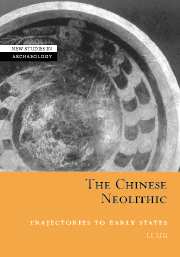Book contents
- Frontmatter
- Contents
- List of illustrations
- List of tables
- Preface
- Cambridge Cultural Social Studies
- 1 Setting the scene
- 2 The changing environmental contexts of China's first complex societies
- 3 Household subsistence and ritual
- 4 Spatial organization and social relations in communities
- 5 Community burial patterns
- 6 Development and decline of complex societies in the Central Plains
- 7 Development and decline of social complexity beyond the Central Plains
- 8 Trajectories toward early states
- 9 Reconstructing social processes
- Notes
- Appendixes
- References
- Index
- References
References
Published online by Cambridge University Press: 22 September 2009
- Frontmatter
- Contents
- List of illustrations
- List of tables
- Preface
- Cambridge Cultural Social Studies
- 1 Setting the scene
- 2 The changing environmental contexts of China's first complex societies
- 3 Household subsistence and ritual
- 4 Spatial organization and social relations in communities
- 5 Community burial patterns
- 6 Development and decline of complex societies in the Central Plains
- 7 Development and decline of social complexity beyond the Central Plains
- 8 Trajectories toward early states
- 9 Reconstructing social processes
- Notes
- Appendixes
- References
- Index
- References
- Type
- Chapter
- Information
- The Chinese NeolithicTrajectories to Early States, pp. 275 - 300Publisher: Cambridge University PressPrint publication year: 2005



